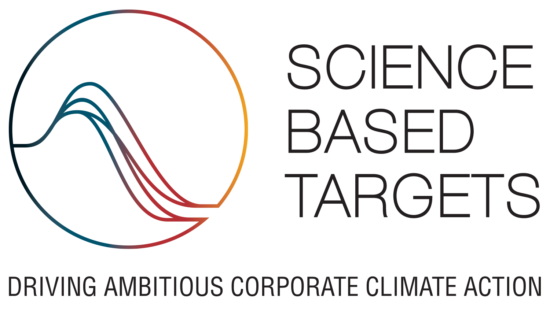Bridgestone gains SBT Certification for CO2 targets

Bridgestone has received Science Based Targets (SBT) certification from SBT initiative (SBTi) for its CO2 emissions reduction targets for 2030, which form part of the company’s Sustainability Business Framework that “ensures the link between sustainability activities and business for contributing to carbon neutrality and a circular economy across the entire value chain”. These efforts align with the “Bridgestone E8 Commitment” which is designed to accelerate transformation to a sustainable solutions company.
SBTi grants certification to companies that have set science-based targets for reducing greenhouse gas emissions. These targets are expected to cover periods of five to 10 years and to comply with the levels stipulated by the Paris Agreement.
Bridgestone has acquired SBT certification for its medium-term CO2 emissions reduction target for 2030 (Scope 1, 2 and Scope 3). Bridgestone is pursuing its goal of carbon neutrality by working to concurrently enhance its contribution to CO2 reduction and minimize CO2 emissions, with emphasis on the importance of rapid and deep emission cuts. To this end, Bridgestone seeks to achieve ongoing improvements in the energy efficiency of its production activities while ramping up efforts to utilize renewable energy. At the same time, Bridgestone reports that it “strives to reduce CO2 emissions across the value chain and the entirety of product lifecycles, which spans from raw material procurement to distribution, use, reuse, and recycling”.
Green and smart factories
Concrete examples of the company’s sustainability are reflected by Bridgestone’s 2030 Long Term Strategic Aspiration, which was announced on August 2022. Those goals describe the company’s efforts to promote the green and smart factory approaches. Specially, Bridgestone seeks to source more than 50 per cent of its energy (electricity) from renewable energy by 2023 and challenge to achieve approximately 100 per cent renewable energy (electricity) by 2030. Bridgestone has transitioned to renewable energy for all electricity purchased at all of Bridgestone EMIA’s locations in Europe, four plants in Japan (Hikone, Shimonoseki, Tosu, and Kitakyushu), and two plants in China (Tianjin and Wuxi). Bridgestone has also begun using solar power at plants in Thailand, the United States, and Europe.
Enhanced contributions to CO2 reduction
Bridgestone is expanding its efforts to supply tyres equipped with the ENLITEN tyre technology for the era of electric vehicles (EVs) and to deliver superior levels of both environmental and driving performance. This technology helps increase the driving distance and electricity efficiency of EVs by reducing tyre rolling resistance. At the same time, ENLITEN-equipped tyres can be customized to provide the performance sought in EVs. For example, the ENLITEN technology can be used to lower tyre weight or to help conserve resources through improved wear resistance. With ENLITEN, Bridgestone aspires to support safety and peace of mind in mobility while making large contributions to sustainability through reduced CO2 emissions and improved resource efficiency.
Expansion of mobility solutions
Then there’s Bridgestone’s predictive maintenance work. Bridgestone provides mobility solutions that help reduce vehicle downtime by using digital technologies to predict vehicle performance and tyre wear while also offering highly efficient tyre replacement and maintenance services to a wide range of customers. As it seeks to support safety and peace of mind in mobility, Bridgestone is developing and expanding its range of solutions that contribute to reduced CO2 emissions during the customer use phase by helping maximize productivity and economic value.
Increased emphasis on supplier engagement
In 2021, Bridgestone partially revised its global sustainable procurement policy. That includes modifications to better shape initiatives to pursue carbon neutrality. Bridgestone also holds explanatory forums on this policy for suppliers in the various regions where Bridgestone conducts business to ensure that they fully understand Bridgestone’s policies and activities. Guided by this policy, Bridgestone has commmited to continue working together with suppliers to reduce CO2 emissions in upstream areas of the supply chain.
Bridgestone is also accelerating initiatives for contributing to a realization of carbon neutrality and a circular economy for advancing its Sustainability Business Framework that ensures the link between sustainability activities and business across the entire value chain, in all of its “produce and sell,” “use,” and “renew” phases of its Dan-Totsu Products.
Bridgestone’s efforts align with the commitments of “Energy: Committed to the realization of a carbon neutral mobility society”, “Ecology: Committed to advancing sustainable tyre technologies and solutions that preserve the environment for future generations” and “Economy: Committed to maximizing the economic value of mobility and business operations” described in a corporate commitment, the “Bridgestone E8 Commitment.”
With “Bridgestone E8 Commitment” which serves as guiding vectors to accelerate its transformation, Bridgestone commits to “the realization of a sustainable society by co-creating value together with employees, society, partners and customers while achieving both sustainability and business growth.”
Bridgestone has also maintained a rank of A- or above from CDP for the past seven years.



Comments